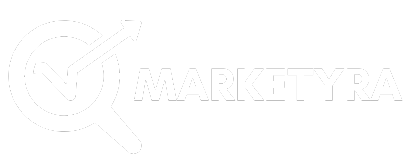On this page you will read detailed information about What Is Google Ads Bidding.
In the dynamic world of digital marketing, understanding the intricacies of Google Ads bidding can be the key to unlocking your business’s online potential. As a savvy marketer, you are likely aware that Google Ads offers a powerful platform to reach targeted audiences, but mastering its bidding strategies is crucial for maximizing your return on investment. This article delves into the essential components of Google Ads bidding, guiding you through the complexities of cost-per-click, bid adjustments, and automated strategies. Equip yourself with the knowledge to optimize your advertising efforts and stay ahead in the competitive digital landscape.
Understanding Google Ads Bidding: An Overview
What Is Google Ads Bidding?
Google Ads Bidding is a dynamic and competitive process where advertisers determine how much they are willing to pay for their ads to appear in search engine results. It essentially involves setting the maximum amount you are ready to invest for each click on your advertisement. This process is crucial because it determines the visibility and reach of your campaigns on Google’s vast search network.
Types of Bidding Strategies
Understanding the different bidding strategies in Google Ads is key to optimizing your advertising efforts. With the Manual CPC (Cost-Per-Click) strategy, you gain full control over your bids, allowing you to adjust them based on performance insights. In contrast, automated strategies like Maximize Clicks or Target CPA (Cost Per Acquisition) leverage machine learning to optimize bids in real-time, aiming to achieve specific goals within your budget constraints.
- Maximize Clicks: Automatically sets bids to help you get the most clicks within your budget.
- Target CPA: Automatically adjusts bids to help get as many conversions as possible at or below your target cost per action.
Factors Influencing Google Ads Bidding
Several factors influence the effectiveness of your Google Ads Bidding strategy. The relevance of your ad and its quality score, which includes metrics like expected click-through rate and landing page experience, are paramount. Moreover, your industry competition and seasonal trends can impact bidding, necessitating a flexible approach to stay competitive.
By understanding these elements, you can tailor your Google Ads Bidding strategy to maximize performance, ensuring your ads reach the right audience at the optimal cost. Through strategic adjustments and informed decisions, you can harness the power of Google Ads to drive your business objectives efficiently.
Different Types of Google Ads Bidding Strategies
Manual Bidding
Manual Bidding offers you direct control over how much you pay for each click on your ads. By adjusting bids for individual keywords or ad placements, you can strategically allocate your budget to prioritize higher-value clicks. This strategy is ideal for advertisers who prefer hands-on control and can dedicate time to monitoring and optimizing their campaigns. It allows for granular adjustments that can maximize ROI when managed effectively.
Automated Bidding
Automated Bidding, on the other hand, leverages Google’s algorithms to set bids on your behalf, aiming to achieve your predefined goals, such as maximizing clicks or conversions. This method is beneficial for those who want to save time and rely on data-driven insights to optimize their bidding. With Automated Bidding, Google automatically adjusts bids based on real-time data, such as device type and location, to improve the likelihood of achieving your desired outcomes. This approach is particularly useful for large-scale campaigns where manual adjustments might be impractical.
Smart Bidding
Smart Bidding is a subset of Automated Bidding that uses advanced machine learning to optimize for conversions or conversion value. Strategies under Smart Bidding include Target CPA (Cost Per Acquisition), Target ROAS (Return on Ad Spend), Enhanced CPC (Cost Per Click), and Maximize Conversions. These strategies focus on achieving specific performance targets and are well-suited for advertisers who prioritize conversion-driven results. By analyzing vast amounts of contextual signals, Smart Bidding adjusts bids in real-time, striving to deliver the best possible performance for your campaigns.
Understanding the nuances of each type of Google Ads Bidding strategy is crucial for optimizing your advertising efforts. Whether you choose Manual, Automated, or Smart Bidding, aligning your strategy with your marketing goals will enhance your ability to effectively manage your advertising budget and achieve desired outcomes.
How to Choose the Right Google Ads Bidding Strategy for Your Business
Align with Your Business Goals
Choosing the right Google Ads Bidding strategy begins with a clear understanding of your business objectives. Whether you’re aiming to increase traffic, generate leads, or boost sales, your goals will inform the best approach to take. For example, if driving website visits is your primary aim, consider the Maximize Clicks strategy. This option allows you to get the most clicks within your set budget, steering more potential customers to your site.
Evaluate Your Budget and Resources
Assessing your budget is crucial when selecting a bidding strategy. If you’re working with a limited budget, Manual CPC bidding might be the way to go, as it offers greater control over each ad’s cost. Conversely, for larger budgets willing to automate, Target CPA (Cost-Per-Acquisition) can optimize conversions without constant manual adjustments. Ensure that your team’s capabilities align with your strategy as well; automated approaches may require less time, while manual strategies demand meticulous oversight.
Analyze Your Competition
Understanding the competitive landscape is vital in making an informed decision. Research industry benchmarks and competitors’ bids to position your strategy effectively. If your market is saturated, consider using Target Impression Share to ensure your ads appear prominently, increasing visibility against fierce competition.
Leverage Data and Insights
Utilize analytics tools to gather insights on past performance. Data-driven decisions can refine your bidding approach to match historical success. For instance, leveraging Enhanced CPC (Cost-Per-Click) can adjust your manual bids based on the likelihood of conversion, fine-tuning your strategy based on empirical data.
Test and Adjust
Finally, flexibility is key. Continuously testing different strategies and adjusting based on performance ensures that your approach remains effective. As market trends and consumer behavior evolve, regularly revisit your strategies to maintain alignment with your business goals and Google Ads Bidding dynamics.
By systematically evaluating these aspects, you can craft a Google Ads Bidding strategy that not only aligns with your business aspirations but also drives meaningful results.
Tips for Optimizing Your Google Ads Bidding for Maximum ROI
Understand Your Goals and Metrics
To optimize your Google Ads Bidding strategy, begin by clearly defining your goals. Whether you aim for increased brand awareness, more website traffic, or higher conversion rates, understanding your objectives is crucial. Once these goals are set, align your Key Performance Indicators (KPIs) accordingly. Metrics such as Cost Per Acquisition (CPA), Return on Ad Spend (ROAS), and click-through rate (CTR) will help you measure the effectiveness of your bidding strategy. Regularly review these metrics to ensure they reflect your business objectives.
Utilize Automated Bidding
Google Ads offers automated bidding strategies that can streamline your bidding process while maximizing your campaign performance. These strategies use machine learning to adjust bids in real-time, ensuring that your ads are shown to the right audience at the optimal time. Consider using options like Target CPA or Target ROAS to automate your bids based on your specific goals. Automated bidding not only saves time but also optimizes for maximum ROI by capitalizing on Google’s vast data and computational power.
A/B Test Regularly
Conducting A/B tests on your ads and bidding strategies allows you to make data-driven decisions that enhance your campaign’s effectiveness. Experiment with different bidding strategies, ad copy, and landing pages to determine what resonates best with your target audience. Testing provides valuable insights into what works and what doesn’t, enabling you to refine your approach continually. Make sure to implement changes gradually to gauge their impact accurately and avoid drastic shifts that could disrupt your campaign.
Monitor and Adjust Frequently
The digital advertising landscape is dynamic, necessitating ongoing monitoring and adjustments to your Google Ads Bidding strategy. Keep an eye on market trends, competitor actions, and performance data to identify opportunities for improvement. Be prepared to adjust your bids and strategies as needed to stay competitive and maintain optimal performance. Regularly updating your approach ensures that your campaigns adapt to changing conditions, securing the best possible return on investment.
In the previous post, we had shared information about Google Merchant Center: Enhancing Your E-commerce Strategy, so read that post also.
Common Mistakes to Avoid in Google Ads Bidding
Overlooking Bidding Strategy Alignment
One frequent mistake in Google Ads Bidding is failing to align your bidding strategy with your campaign goals. It’s crucial to ensure that your strategy supports your objectives, whether it’s increasing brand awareness or driving conversions. For instance, using a manual cost-per-click (CPC) strategy when aiming for conversions might not be as effective as utilizing a target CPA (cost-per-acquisition) strategy. Always select a bidding approach that complements your goals to optimize your return on investment.
Neglecting Negative Keywords
Another common pitfall is ignoring the power of negative keywords. By not adding negative keywords, you may end up paying for irrelevant clicks, which can drain your budget. Regularly updating your negative keyword list ensures that your ad spend is focused only on searches that are truly relevant to your offering. This practice enhances your ad’s performance and efficiency by filtering out unqualified traffic.
Failing to Monitor and Adjust
A significant error in Google Ads Bidding is failing to regularly monitor and adjust your bids. The digital marketing landscape is dynamic, and your bidding strategy should be equally adaptable. Regular reviews of your campaign performance data are essential. Adjust your bids based on insights such as click-through rates (CTR) and conversion metrics. This proactive approach helps to capitalize on what’s working and rectify areas that aren’t delivering results.
Ignoring Quality Score
Lastly, disregarding the Quality Score can be detrimental. This metric influences your ad’s visibility and cost-effectiveness. A low Quality Score can lead to higher costs and lower ad placements. Enhance your Quality Score by focusing on improving ad relevance, click-through rates, and the landing page experience. Prioritizing these elements can significantly impact your Google Ads Bidding success, ensuring you achieve more with every dollar spent.
Conclusion
In mastering Google Ads bidding, you unlock the potential to significantly elevate your digital marketing endeavors. By understanding the nuances of bid strategies and aligning them with your business objectives, you can maximize your return on investment and drive targeted traffic to your website. Whether you choose automated bidding to leverage Google’s algorithms or manual bidding for more control, continually monitoring and adjusting your approach will ensure optimal performance. As you navigate this dynamic landscape, remember that informed decisions and strategic agility are your greatest allies in achieving advertising success. Embrace these insights to transform your Google Ads campaigns into powerful growth engines.
Disclaimer
The content published on the Marketyra blog is for educational and informational purposes only. While we strive to share accurate and up-to-date digital marketing tips, strategies, and trends, we do not guarantee any specific results. Readers are advised to use their own judgment before applying any tips or advice provided. Marketyra is not liable for any losses, damages, or issues arising from the use of blog content.
So friends, today we talked about What Is Google Ads Bidding, hope you liked our post.
If you liked the information about What Is Google Ads Bidding, then definitely share this article with your friends.
👉 Need help with SEO or digital marketing services?
Feel free to call us at 📞 +91-9306925861, email us at 📧 admin@marketyra.com to get in touch!






